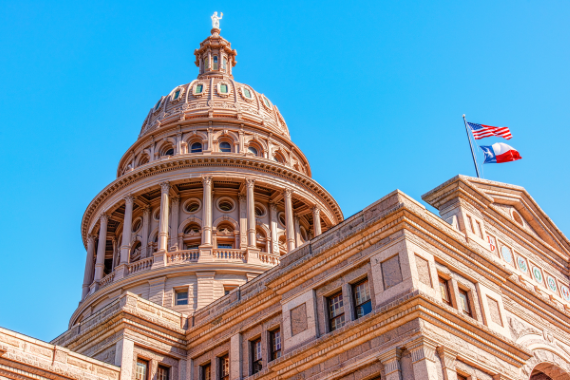Partnership Urges Advancement of Coastal Spine Project for a More Resilient Houston
Published Oct 06, 2022 by Coalter Baker
In late September, the Greater Houston Partnership, in collaboration with the Gulf Coast Protection District (GCPD), coordinated a trip to Washington D.C., to educate on the importance of the Coastal Texas Protection and Restoration project. The Coastal Spine – a barrier flood gate and levee system located along the upper Texas coastline, was recommended by the U.S. Army Corps of Engineers (USACE) to shield Port Houston, the Houston Ship Channel, and surrounding petrochemical producers from catastrophic weather events.
The Coastal Spine is designed to protect the critical infrastructure along our coastline that supports supply chains across the globe. The greater Houston region is home to the largest petrochemical producers in the world. These products range from gasoline for our vehicles to semiconductors to everyday products, including food and drink packaging, appliances, and electronics, hardware, construction materials, pharmaceuticals, fertilizers, and automotive parts and tires. Many products that travel through Port Houston, which serves as the number one U.S. port in waterborne tonnage, provide more than $800 billion in national economic value.
The project will also safeguard the more than 7.2 million residents of the metro Houston area from severe weather events. In September 2008, Kemah, Texas, saw a 17-foot surge from Hurricane Ike. A similar system is used in the Netherlands to keep encroaching ocean waters from intruding upon critical infrastructure and human life. In this instance, we are targeting the devastating effects of storm surges.
Delegation members in attendance:
- State Senator Larry Taylor
- Mayor Michel Bechtel
- Mayor Carl Joiner
- Galveston City Council Member Marie Robb
- Bob Mitchell
- Sally Bakko
- GCPD Executive Director Nicole Sunstrum
- Phillip Fordham with LyondellBasell
- Partnership Public Policy team members
The delegation engaged with staff from the offices of Senators Cornyn and Cruz and staff from Senator Cindy Hyde-Smith of Mississippi, who sits on the Senate Appropriations Committee. The group met all four Texas appropriators: Ranking Member Kay Granger, Congressman Henry Cuellar, Congressman Judge Carter, and Congressman Tony Gonzales.
During the short visit, the delegation also connected with several trade associations, including the American Petroleum Institute, the American Chemistry Council, the National Association of Manufacturers, and the American Fuel and Petrochemical Manufacturers.
With the Partnership’s help, Texas will secure support from all levels of government to realize the Coastal Texas Program, to protect the lives, economy, and national security assets, all supported by Port Houston and the Houston Ship Channel.
Learn more about the Partnership's agenda for the 88th Texas Legislative session.
 The Houston Report
The Houston Report



















